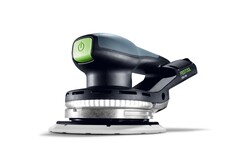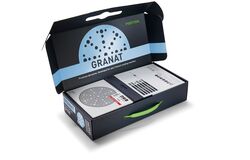Preparation of a coated wooden door

Machines/Accessories
Procedure
-
The door is unhinged and placed on trestles. All Rubber gaskets on the door leaf are removed. The door handle is then unscrewed and the door leaf is cleaned with a degreasing agent such as acetone before sanding. The sanding machine is then fitted with the appropriate abrasive (Granat P120 or coarser, depending on the type of coating). The sanding machine is connected to the extraction system - attach the Suction hose and connect the cordless vacuum cleaner to the sanding machine via Bluetooth.
-
Sand the door crosswise and remove all loose or non-adhering coating residues. Care should be taken to ensure that the surface is even and free of damage after sanding. If necessary, repair any major damage or unevenness with wood filler. The ETSC 2's integrated LED light ring allows defects to be recognised immediately, which avoids time-consuming reworking. After the first sanding pass, thoroughly remove any sanding dust from the surface with a damp cloth or a dust-binding cloth.
-
Now start with the first coating application. If necessary, treat the door with a primer or adhesion primer beforehand. In this application example, a one-pot system is used that combines primer, intermediate coat and top coat. Apply the first coat evenly. The door leaf is then sanded in between - always observe the manufacturer's drying times. Depending on the type of paint, we recommend a grain size between Granat P180 and P220. Then remove the dust from the door leaf again and apply the second coat. Make sure to apply enough material to achieve an even surface. Once completely dry, replace the Rubber gaskets and hang the door.












































